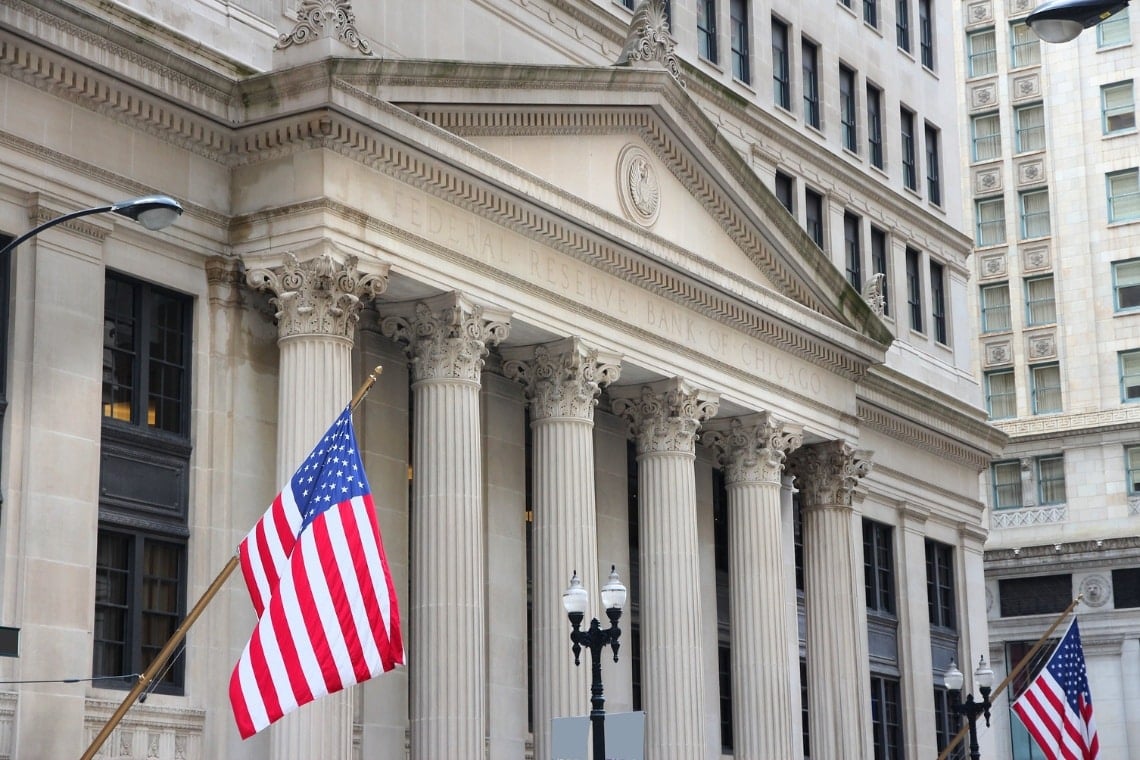The Federal Reserve will meet this week for its regular Federal Open Market Committee (FOMC) meeting, and the opinion is growing among economists and fund managers that the Fed is about to make a big mistake by raising interest rates.
According to a new CNBC poll on the Fed, 72% of economists and fund managers believe the Fed will announce a rate hike at its next meeting.
Summary
The interest rate hike will take place during the Federal Open Market Committee
This is a significant change from a few months ago, when most analysts believed that the Fed would keep a light touch and keep interest rates near zero for the foreseeable future.
Why the sudden change in opinion and why do so many experts believe the Fed is making a mistake in raising rates now?
A major concern is that of the banking collapse and its impact on the global economy. Even though the market does not seem to have reacted much more, there is certainly a need to hedge against a delayed burst of effects.
Many experts fear that a premature rate hike could stifle economic growth and lead to a new recession.
The current economic recovery is still fragile, and many sectors, such as tourism and hospitality, have yet to fully recover from the pandemic.
Another concern is the inflationary pressures that have developed over the past year.
Inflation has risen faster than expected, and many experts believe that the Fed’s loose monetary policy has contributed to this trend.
However, there is a growing consensus among economists that the recent surge in inflation is largely transitory and will ease over time.
This means that the Fed may be overreacting by raising rates in response to short-term inflationary pressures.
The consequences of raising rates
A rate hike now could have unintended consequences, such as driving up the value of the dollar and making US exports less competitive.
This could hurt the overall economy and cancel out the benefits of a rate hike.
There is also concern that the Fed may act too quickly in response to rising inflation expectations.
While inflation has been trending upward, it is still well below the Fed’s 2% target. Some experts argue that the Fed should wait until inflation is clearly outside this range before taking action.
In addition, the Fed’s decision could disproportionately impact low-income households, which are still struggling to recover from the economic consequences of the pandemic.
Higher interest rates could make it more difficult for these households to access credit and could lead to higher borrowing costs.
Of course, there are also arguments for raising rates at this time.
Many experts argue that the Fed needs to signal its commitment to fighting inflation and that keeping rates low for too long could lead to a destabilizing surge in inflation.
In addition, some experts believe that the recent surge in inflation is not as transitory as many believe and that the Fed must act now to prevent it from taking root in the economy.
Ultimately, the decision to raise rates this week will depend on a number of factors, including the latest economic data, inflation trends, and the status and effects of the crisis.
The Fed will have to balance the risks of a premature rate hike with the potential benefits of signaling commitment to fighting inflation.
Whatever the Fed’s decision, it is clear that it will have far-reaching implications for the economy and financial markets. Investors will be watching closely for any hint of a change in the Fed’s stance and will be ready to react accordingly.
The upcoming FOMC meeting could be a pivotal moment for the Federal Reserve and the global economy. With so much uncertainty and conflicting opinions, the decision to raise rates or maintain the status quo will be difficult.
The Fed must carefully weigh the risks and benefits of each option and make a decision that supports the long-term health and stability of the economy.
According to Fed officials, the situation is much more complicated
The financial world is watching closely for this week’s FOMC meeting, with most economists and fund managers expecting a rate hike from the Federal Reserve.
Nationwide’s chief economist Kathy Bostjancic says the Fed’s decision is more complex than a simple rate hike.
Bostjancic says the Fed has three decision-making options: a 25-basis-point rate hike with a restrictive tone, a 25-basis-point rate hike with an accommodative tone, or an indecision.
The first option, a hawkish rate hike with a restrictive tone, would imply that the Fed is anticipating further rate hikes in the future.
The second option, a 25 basis point rate hike with an accommodative tone, would see the Fed not providing forward-looking indications similar to the European Central Bank’s 50 basis point rate hike last week.
The third option, an indecision, could result in the Fed needing time to assess the situation.
According to Bostjancic, small and medium-sized banks provide about 68% of all loans to small businesses, which could lead to slower economic activity if overall bank lending and credit conditions become more restrictive.
Bostjancic also points out that prior to the recent bank stresses, bank lending standards were already tightening, with more than 40% of banks reporting restrictive standards previously associated with recessionary conditions.
The bond market is now discounting the possibility of a rate cut starting in June, with about 60 basis points of rate cuts discounted by the end of the year.
However, Bostjancic believes it is premature to make predictions of rate cuts outside of a larger financial crisis.
While inflation is likely to slow more rapidly than previously expected, it still remains very high, and his outlook is an economy headed for a moderate recession starting in the second half of 2023, with risks of a harder landing increasing.




